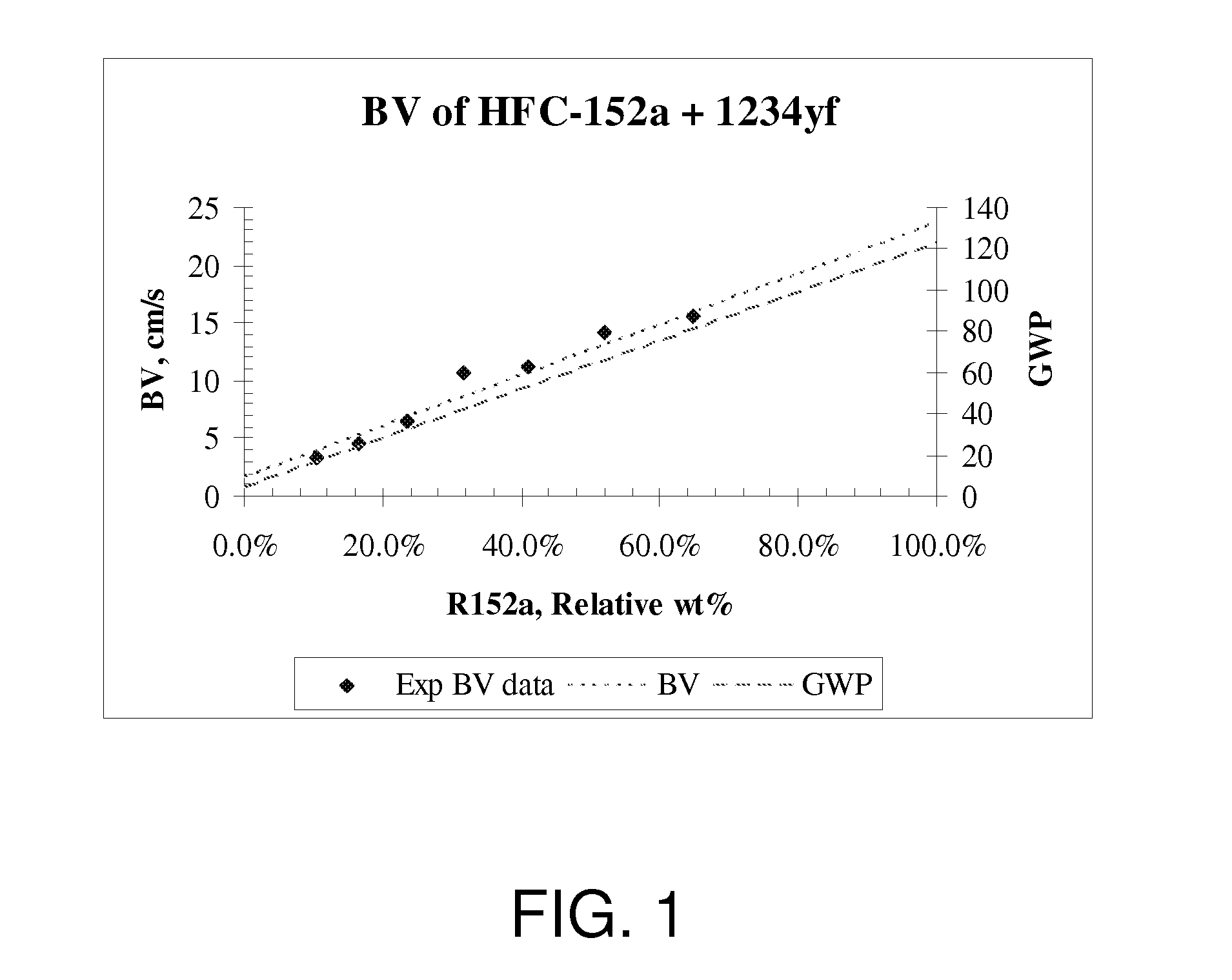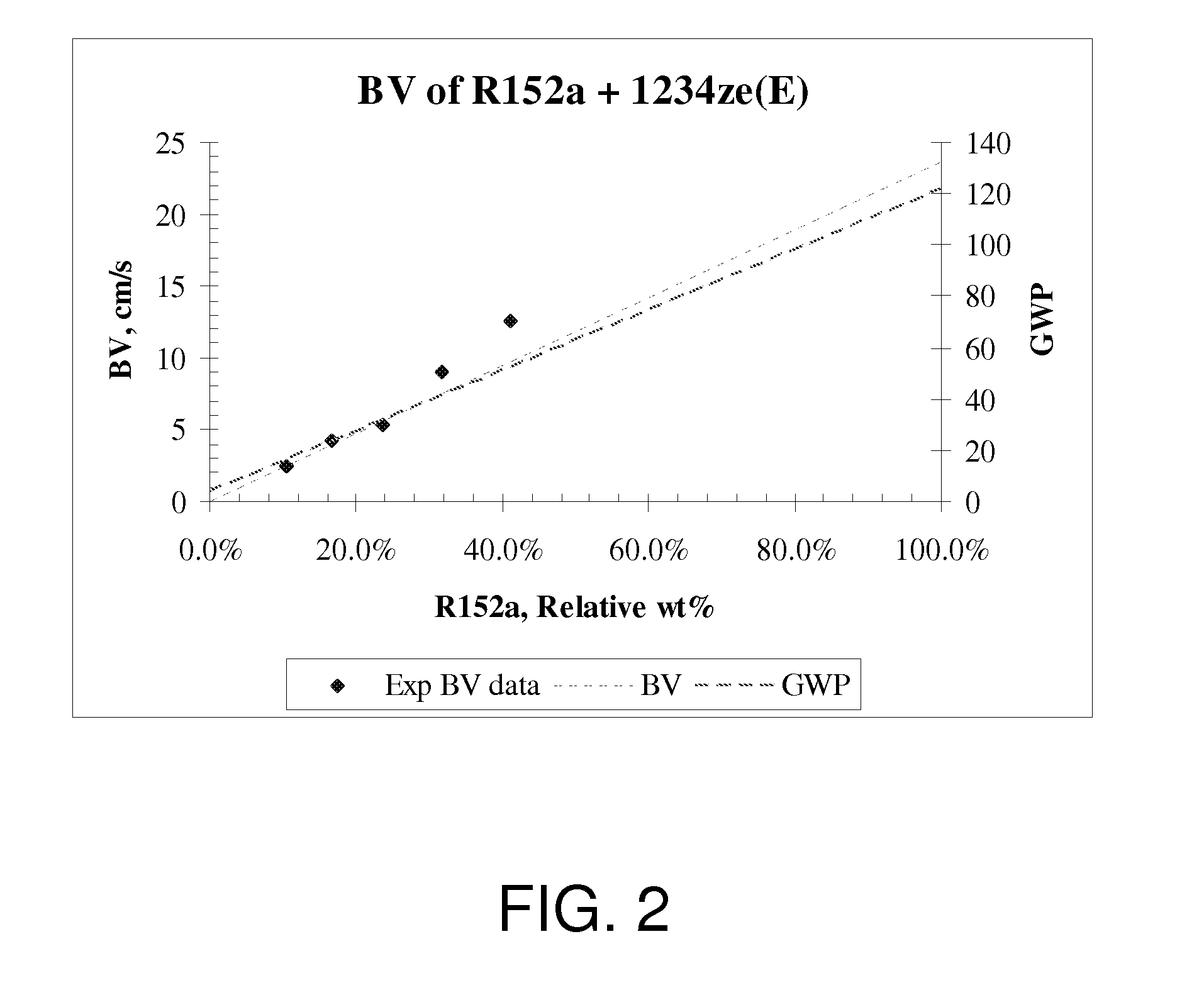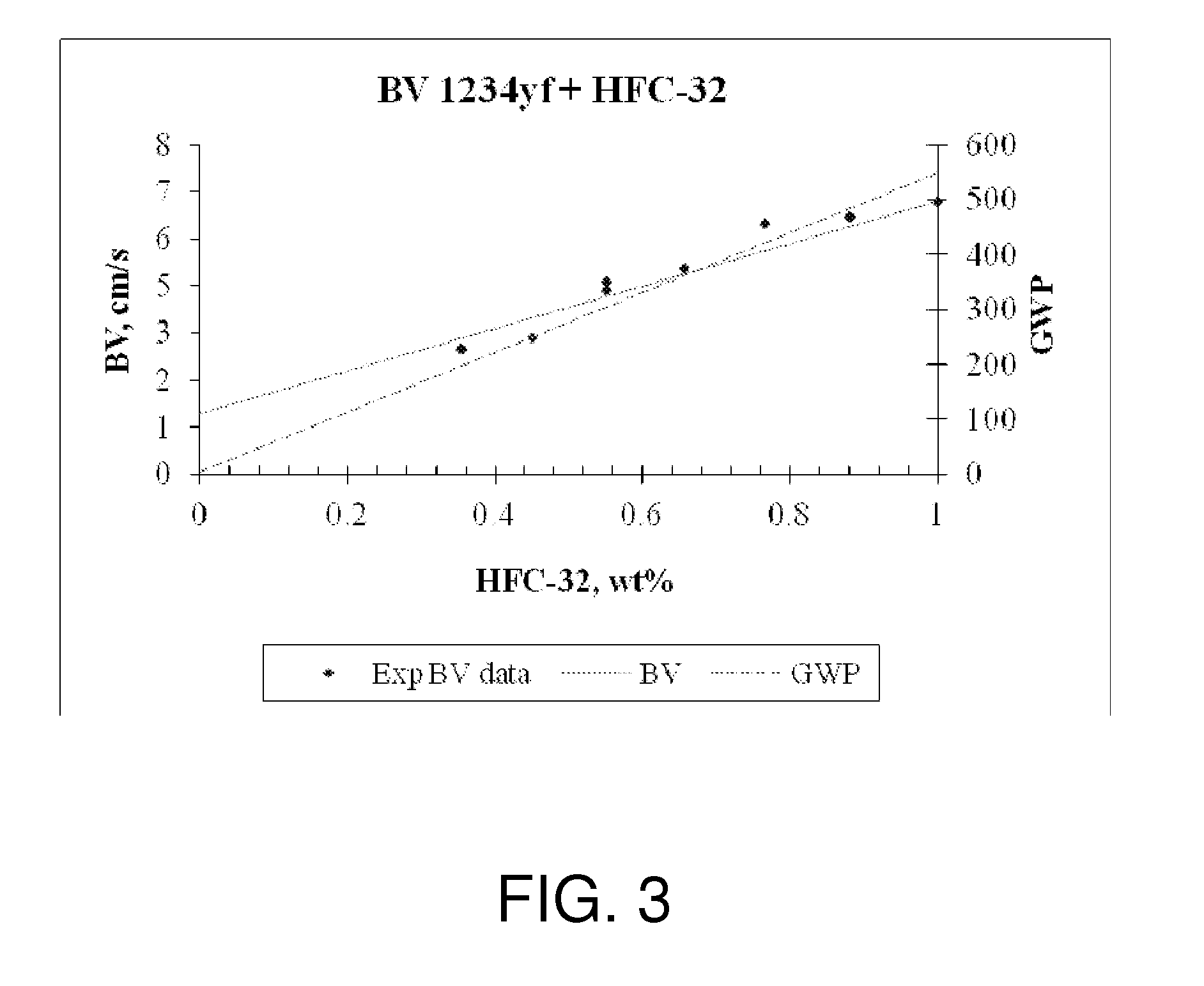Low gwp heat transfer compositions
a heat transfer composition and low gwp technology, applied in the field of refrigerant compositions, can solve the problems of loss of refrigerant thermodynamic performance or energy efficiency, compositions are flammable, and are not viable for use in neat form in many applications
- Summary
- Abstract
- Description
- Claims
- Application Information
AI Technical Summary
Benefits of technology
Problems solved by technology
Method used
Image
Examples
example 1
Flammability of HFC-152a Mixtures
[0042]Burning velocity (BV) measurements for certain HFC-152a / HFO-1234yf and HFC-152a / HFO-1234ze(E) blends are shown in FIGS. 1-2. The burning velocity measurements were performed using the vertical tube method described in ISO standard 817 and ASHRAE standard 34. FIGS. 1-2 also show the GWP of the mixtures. The results in FIGS. 1-2 illustrate applicants' unexpected finding that the maximum burning velocity can closely be approximated by a linear relationship with wt % of the components. According to certain preferred embodiments, therefore, the amount of the components of the present invention is selected according to the Formula I provided above, that is, by approximating the burning velocity of the blends by using the wt % pure component burning velocity. In preferred embodiments, the compositions comprise up to about 30 wt % of HFC-152a, more preferably up to 20% of HFC-152a, while still exhibiting a burning velocity of the blend that is below ab...
example 2
Flammability of HFC-32 Mixtures
[0043]Burning velocity (BV) measurements of the HFC-32 / HFO-1234yf and HFC-32 / HFO-1234ze(E) blends are shown in FIGS. 3-4. The burning velocity measurements were performed using the vertical tube method described in ISO standard 817 and ASHRAE standard 34. FIGS. 3-4 also show the GWP of the mixtures. The results in FIGS. 3-4 confirm that the maximum burning velocity can closely be approximated by a linear relationship with wt % of the components.
example 3
Flammability of Multi-Component Mixtures
[0044]The burning velocity of a mixture of 40 wt % HFC-32, 20 wt % HFO-1234yf, 30 wt % HFO-1234ze(E), and 10 wt % HFC-152a, which is mixture #C3 in Table A was also measured and is shown in FIG. 5. In order to determine the maximum burning velocity a range of relative refrigerant composition was maintained at 40 wt % HFC-32, 20 wt % HFO-1234yf, 30 wt % HFO-1234ze(E), and 10 wt % HFC-152a, while the air composition of air was ranged from 86-90 vol %. The maximum burning velocity was 5.5 cm / s which occurred at 88 vol % air. The maximum burning velocity calculated from the wt % of the refrigerant times the pure component burning velocity was 5.3 cm / s which is in very good agreement with the experimental value.
PUM
 Login to View More
Login to View More Abstract
Description
Claims
Application Information
 Login to View More
Login to View More - R&D
- Intellectual Property
- Life Sciences
- Materials
- Tech Scout
- Unparalleled Data Quality
- Higher Quality Content
- 60% Fewer Hallucinations
Browse by: Latest US Patents, China's latest patents, Technical Efficacy Thesaurus, Application Domain, Technology Topic, Popular Technical Reports.
© 2025 PatSnap. All rights reserved.Legal|Privacy policy|Modern Slavery Act Transparency Statement|Sitemap|About US| Contact US: help@patsnap.com



